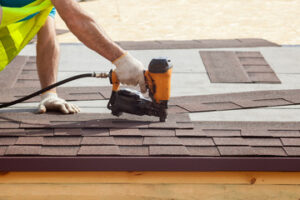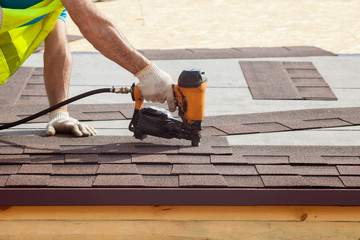Roofing Company Near Me does more than just fix leaks and replace tiles. It quietly influences how people feel inside their homes. Protection, comfort, and safety begin at the top. Roofs do not just shield—they define shelter.
Modern roofing companies are now diving into sustainable solutions. They consider environmental impact before starting any work. The focus has shifted from patching problems to preventing them. This change reshapes how roofs are built and maintained.
Materials used today are smarter and more efficient. They react to heat, cold, and moisture with purpose. Some roofs even clean the air around them. Roofing companies are becoming environmental allies.
There is now a growing link between roofing and mental well-being. A well-built roof reduces noise, temperature shifts, and air leaks. These small comforts boost emotional health. A peaceful home starts above our heads.
People no longer see roofing as a one-time task. They now schedule yearly checkups like medical visits. These preventive inspections catch issues early. It’s care, not just repair.
Digital tools are transforming how roofing companies operate. Drones scan rooftops without ladders or risk. Augmented reality helps visualize the outcome before lifting a hammer. Roofing is now as much tech as it is trade.
Customers demand transparency from the roofing process. They want photos, videos, and real-time updates. Roofing companies are embracing this shift. Trust is built with clarity and communication.
Smart homes have influenced roof design. Roofs now house antennas, solar panels, and heat sensors. Roofing companies install and integrate these features. They must adapt to this evolving role.
Climate changes have made roofing more complex. Stronger storms and unpredictable seasons test every inch. Companies now build roofs with resilience in mind. These are no longer mere covers but survival shields.
Homeowners are becoming more educated about roof structures. They ask about slope, drainage, and airflow. This creates a new kind of conversation. Roofing companies become educators and advisors.
Some roofing companies are branching into design. They blend form with function using unique shapes and patterns. Roofs become part of a home’s visual identity. Beauty now meets purpose on every slope.
Technicians are no longer just workers with tools. They receive specialized training in sustainability, safety, and energy systems. The profession is evolving into a craft. Roofing is gaining the respect it long deserved.
People are realizing the economic value of a good roof. It raises property value and cuts utility costs. A well-built roof pays itself forward. It’s a smart investment, not just a home improvement.
Time is now a luxury, so speed matters. Roofing companies are optimizing schedules with AI-powered logistics. They reduce delays and make accurate timelines. This enhances customer experience from start to finish.
There’s also an emotional side to roofing. It’s often done after a loss—a fire, storm, or damage. The company becomes part of a healing process. Their work helps restore more than buildings.
Roofs play a role in family memories. Children hear rain on the roof while falling asleep. Parents gather beneath it during storms. Roofing companies support these moments, even without knowing it.
Many companies are now offering “roof wellness” packages. These include seasonal maintenance, gutter checks, and moss control. It’s like a spa plan for your home’s head. Small steps prevent expensive fixes later.
The demand for custom roofing is rising. Homeowners want color, texture, and character. Roofing companies must blend technical skill with aesthetic judgment. No two roofs look the same anymore.
Social media has changed how people find roofing services. Homeowners scroll through finished projects before choosing. This adds pressure but also pride. Roofing companies now build for two audiences—clients and future clients.
Roof warranties are becoming more detailed and customer-friendly. They cover wind speeds, material aging, and workmanship. Transparency in fine print builds trust. Clear policies help avoid future disputes.
Some companies now use eco-recycling methods for old roofs. Shingles, nails, and scraps get repurposed into new products. This reduces landfill waste and carbon footprints. Roofing becomes part of a larger circular economy.
Communication has become a core skill in the roofing world. Workers explain each step and listen to concerns. Good roofing companies prioritize clarity. They understand that silence creates stress.
Advanced insulation methods are now tied to roofing. Companies offer total top-to-bottom energy reviews. Roofs are seen as the starting point for efficiency. Comfort begins with thermal control.
Some companies now specialize in disaster response. They have mobile units that deploy quickly after storms. Their job is urgent and emotionally charged. They bring hope with hammers and repair kits.
Innovative companies explore bio-based materials. These include plant fibers and natural resins. They’re safe, sustainable, and surprisingly strong. The future of roofing might be grown, not mined.
Virtual consultations are gaining traction. Clients walk through designs from their couch. This removes scheduling conflicts and travel delays. Convenience is becoming part of the brand promise.
There’s growing interest in noise-reducing roofing materials. In loud urban areas, silence is valuable. Roofing companies now offer acoustic upgrades. Peace and quiet become selling points.
Some homeowners want green roofs—actual gardens on top. These require special support and drainage systems. Roofing companies work with landscapers and engineers. Together they build life above ground.
There’s also a cultural shift in how roofs are viewed. Once ignored, they’re now seen as potential. Rooftops are turning into spaces for energy, water collection, and even gatherings. Roofing companies are building platforms, not just panels.
Maintenance subscriptions are growing in popularity. Clients pay monthly to have their roof inspected and cleaned. It’s proactive instead of reactive. The model reflects the health-care mindset for homes.
Some roofs now include snow-melting systems. Heating wires run under tiles to prevent ice buildup. Roofing companies install these in regions with harsh winters. It’s another example of roofs adapting to nature.
Many now see roof replacement as a rite of passage. It signals stability, ownership, and adult responsibility. Roofing companies support this major milestone. Their work marks a chapter in the homeowner’s journey.
Digital reviews influence roofing companies more than ever. A five-star rating can mean steady bookings for months. Customer service is now as vital as construction. Reputation is built online and in the attic.
Some companies embrace storytelling. They share before-and-after journeys and family testimonials. This builds emotional connection with new clients. It’s roofing wrapped in humanity.
Training programs are expanding to include mental health. Workers deal with heights, heat, and pressure. Strong minds are as important as strong bodies. Roofing companies are investing in well-being.
Homeowners now request allergen-resistant roofing. Certain materials trap fewer particles and stay cleaner. This improves air quality indoors. Roofing choices now impact health beyond the surface.
Light-reflective coatings are being used to fight extreme heat. They reduce the need for air conditioning. Roofing companies offer these as energy-saving upgrades. Reflective technology meets climate needs.
Some firms now offer design-forward rooflines. These include asymmetrical shapes and integrated skylights. Architecture meets engineering on new levels. Roofing is no longer hidden but highlighted.
Weather-responsive roofs are being developed. They adapt to temperature and humidity changes. Roofing companies install sensors and smart materials. The goal is a living, responsive home system.
Many roofing firms now hire diversity-focused teams. They train women and underrepresented groups in skilled labor. This brings new perspectives and talent. The field grows stronger through inclusion.
Surprisingly, some roofing companies are adding community services. They fix roofs for schools, shelters, or the elderly. These efforts build goodwill and trust. Roofing becomes a way to give back.
Emerging companies focus on aging-in-place solutions. They ensure roofs are safe for long-term living. Easy maintenance, durability, and thermal balance matter. Roofing helps people stay in their homes longer.
Some companies provide weatherproof packages tailored to region. They adjust materials for wind, rain, and UV exposure. Roofing becomes customized protection. Homes no longer get one-size-fits-all tops.
Others are using recycled ocean plastics in their products. These roofs clean up water while covering homes. It’s a win for both the planet and the customer. Roofing turns into environmental activism.
Thermal imaging is now common in inspections. It shows hidden leaks and heat loss areas. Roofing companies use this data to plan better repairs. Infrared becomes a guide for perfect work.
Contractless payments and remote signatures are simplifying bookings. Clients confirm everything via phone or email. Roofing meets digital convenience. Speed, security, and simplicity come together.
Finally, the roofing company of today is not just about construction. It’s about purpose, sustainability, and connection. They serve as protectors, partners, and visionaries. And their story unfolds across every roof they build.
